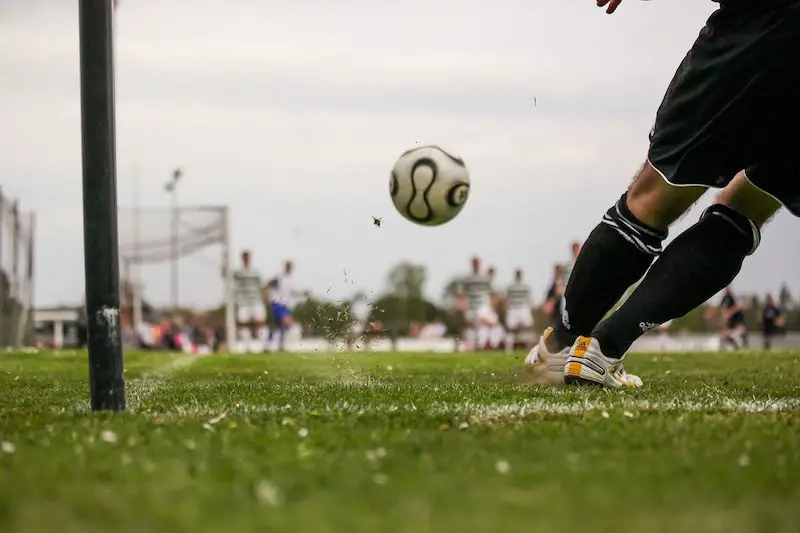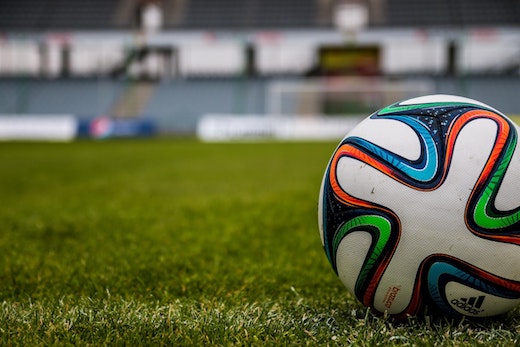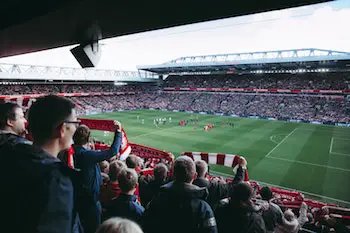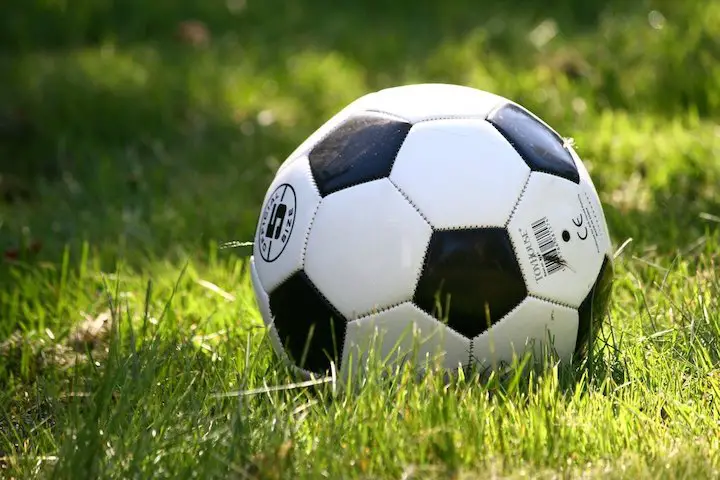- External Physical Factors impact soccer such as Weather and Playing conditions i.e. Wind, Dry surface, Wet surface.
- We cannot always control the physics of soccer, and we have to ADAPT as a result.
- Understanding physics and its relation to soccer can help us to become better players and coaches.
Your Guide
 Alex Waite
Alex Waite
Soccer is jam-packed full of PHYSICAL MOVEMENT and FORCES.
- Running
- Kicking
- Jumping
- Tackling
- Taking a throw-in
- Saving the ball, and
- Heading

Are just a small selection of physical maneuvers in soccer.
There is a CLEAR LINK between soccer and physics, and playing soccer can help us to deepen our understanding of how we can use gravity, force, space and time to IMPACT a soccer ball.
When I was a young soccer player, I did not have an AWARENESS of how all my physical movements could help me become more intelligent on the pitch.
I did not think about different in-play situations.
I was like a dog with a bone, simply RUNNING around with RAW ENERGY, trying to chase the soccer ball everywhere, tackle opponents and shoot as hard as possible when I had possession.
I had the ENERGY to become a relatively good player. But I lacked an UNDERSTANDING OF
1) How To Move
2) Where to be to Impact The Game.
To become an all-rounded soccer player, you need both.
As I got older, played at a higher level, and EVENTUALLY became a coach, I grew MORE AWARE of how physics is linked to soccer in so MANY WAYS.
I have tried to pass on this understanding in soccer-related coaching and tips to younger players as AWARENESS of how to use your body and the space around you is CENTRAL TO IMPROVEMENT.
In this article, I will share SOME OF the considerations I have when coaching fellow soccer players about soccer and how it HELPS US to understand physics.
Mastering Body Movements
Players in most sports use the same gross motor skills, such as using our leg muscles TO RUN our torso to balance our arm muscles TO THROW.
But fine motor skills, using smaller limbs and movements to develop control, touch and precision, are where the differences occur.
In soccer, fine motor skills are used IN THE FEET.
Reacting with our feet and developing feet-based skills involved requires an understanding of physics.
For example, if a player passes the ball with pace to their teammate, they will QUICKLY LEARN that they need to position their inner foot towards the ball to CREATE A larger surface area to control the pass.
Otherwise, the ball will DEFLECT OFF the more pointed areas of the feet, and it will MOVE in a different direction.
When I was training to be a Football Association qualified coach, I was UNWARE of how soccer players DEVELOP their personal skills.
But, over time, I learned that when players get as MANY TOUCHES of the ball as possible, they improve control and learn how to use their feet effectively.
As I have seen new players become more experienced over time I see more how, they learn to control their feet TO REACT in different ways to Pass, Shoot, Control and Tackle.
What are some of the important individual skills to develop in soccer?
Angling and positioning the feet muscles, and bones to control, strike and pass the ball ARE CENTRAL to any developing or established player because these individual skills are used HUNDREDS OF TIMES during training and matches.
The movement IN THIS AREA is where players spend hours practicing as they learn muscle memory to train their bodies to:
- Generate Power
- Placement
- Precision on the Soccer Ball
Recent research conducted by Jakub Kokštejn and Martin Musalek from the University of Prague found that developing game-specific motor skills in soccer helps to develop more elite players.
Former England captain David Beckham famously SPENT HOURS after training, perfecting his free-kick technique in DIFFERENT SITUATIONS, which he would then apply in competitive game situations.
This repetitive practice of KNOWING HOW and WHERE to strike the ball to generate physical movements, such as spin and pace, led to one of his most famous goals ever for England.
Out of our hands: Forces and Soccer
Force in soccer is used for different in-play situations. Sir Isaac Newton was one of the first scientific OBSERVERS OF GRAVITY and ITS EFFECTS in the 1600s.
Newton noticed HOW UNBALANCED FORCES can make objects move at different lengths and at different times.
Newton’s theories can be applied to a soccer ball.
For instance, if a player wants to shoot at a goal, they are likely to use MORE POWER and cause an unbalanced force with their foot on the ball.
Alternatively, a short-range, ten-yard pass will REQUIRE LESS FORCE to accurately reach a teammate.
But, when soccer players gain more experience, they WILL ENCOUNTER more variables that affect the ball in different situations.
When I played soccer in London, the rain was a regular issue on the football pitch in winter, often creating surfaces more like water slides than grass.
However, sometimes WE PLAYED on the pitches rather than canceling the match.
I soon learned that If the playing surface was wet, there will be less friction for the ball, meaning it WILL ROLL further with less force.
Or, if the grass is long on the pitch then MORE RESISTANCE is felt, and more force is required to get the ball to its target.
Wind also has an impact on the force of the soccer ball. In blustery playing conditions, it’s common to see goalkeepers and free-kick takers STRUGGLING to kick the ball where they want it to go.
The resistance from the wind once the ball is airborne can send the ball back towards the kicker. Alternatively, drag force can launch the ball further in some situations.
This problem is something that players of all abilities have to CONTENT WITH, which has led to some forgettable situations…
In 2007, former Tottenham goalkeeper Paul Robinson scored a comical Premier League goal against Watford.
Robinson launched a LONG KICK up the pitch, and the drag force propelled the ball more than he expected, causing it to BOUNCE QUICKLY off the turf and lob over opposing goalkeeper Ben Foster.
In a more extreme example of WIND RESISTANCE, Thurrock defender Kamarl Duncan scored an almost UNBELIEVABLE OWN GOAL in an English semi-professional match between Thurrock and Romford in 2015.
Physics is everywhere in soccer. We SUBCONSCIOUSLY ADAPT our bodies to different in-game situations.
From the LARGE MOVEMENTS in our legs and upper bodies to the tiny movements of bones in our feet, ALL IMPACT the force on a soccer ball.
Weather and playing conditions like we have seen in the examples above are HUGE physical factors, and they can ultimately affect the outcomes of soccer matches.
Ultimately, as participants of the game, soccer players need to adapt and use physics to help them in their game.
For instance, a player may have to consider how THEY STIKE THE BALL when kicking into the wind or on a Dry Surface vs a Wet Surface.
Or, like David Beckham, thinking about how and where we strike the soccer ball when shooting can help us become better at this skill.



